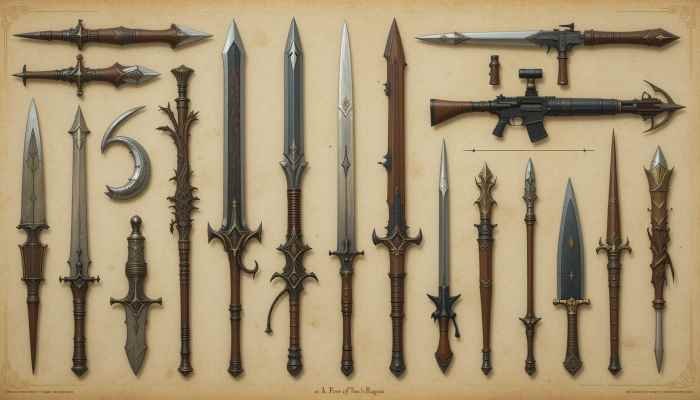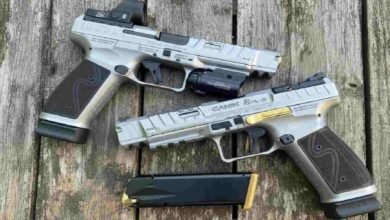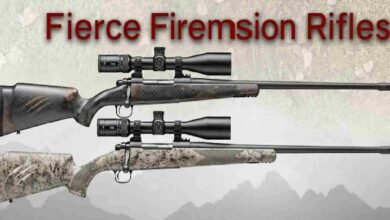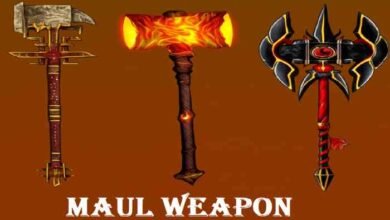DnD Weapons: Guide Blades, Bludgeons & Battle Tactics

In the broad and exciting context of Dungeons & Dragons (DnD Weapons), weapons are more than materials used in combat—they also describe a character’s identity, personality, and class proficiency. You could be wielding a flaming greatsword or a hidden blade stained with poison. Still, whether you’re swinging a sword over your head, hiding behind air, or facepalming at how lame your options are, the weapons you choose will define tactics and characters in the party you’re playing for. In addition to all the simple DnD weapons, there are many options in DnD weapons for people to use—from lasers to weapons that change their colour.
This guide will break down everything you need to know about D&D weapons, from DM/GM weapon lists, best weapons for every class, homebrew weapons, and the coolest unique options to advanced systems formulations like weapon mastery that have existed in some of the newer revisions.
- Introduction: Why D&D Weapons Matter
- DnD Weapons List: Types of swords dnd Core Weapon Types
- Best DnD Weapons: Power and Performance
- Cool DnD Weapons: Style and Theme
- Unique DnD Weapons: One-of-a-Kind Items
- Paladin DnD Weapons: Righteous Power
- Rogue DnD Weapons: Finesse and Stealth
- Barbarian DnD Weapons: Raw Destruction
- Warlock DnD Weapons: Arcane and Eldritch
- Homebrew DnD Weapons: Custom Creativity
- DnD Weapons Mastery: Enhanced Combat Options
- DnD Weapons Wikidot and Resources
- DnD Weapon Categories Overview
- Final Thoughts: Choosing the Right DnD Weapon
Introduction: Why D&D Weapons Matter
Weapons in Dungeons & Dragons aren’t simply about damage; they help with roleplay, character backstory, combat identity, and tactical flexibility. For example, a Warlock’s pact weapon may signify a long-term dedication to a dark power. At the same time, a Paladin’s sword may be seen as a glistening instrument of divine authority.
Choosing a weapon is a combination of narrative flair and mechanical advantage. Each type of weapon — martial, simple, finesse or ranged weapons — comes with specific benefits and consequences.
DnD Weapons List: Types of swords dnd Core Weapon Types
The DnD weapons list divides gear into two primary categories: simple weapons and martial weapons. Each has different proficiency requirements.
Simple DnD Weapons
Ideal for beginners and NPCs, these weapons are easy to use and include:
- Club
- Dagger
- Greatclub
- Handaxe
- Javelin
- Light hammer
- Mace
- Quarterstaff
- Spear
- Crossbow, light
- Dart
- Sling
They require little training and are accessible to most classes, including Clerics, Wizards, and commoners.

Martial DnD Weapons
These are used by fighters, rangers, paladins, and other warrior classes:
- Longsword
- Greatsword
- Battleaxe
- Warhammer
- Maul
- Halberd
- Scimitar
- Rapier
- Shortsword
- Longbow
- Crossbow, heavy
These weapons often come with extra properties like reach, finesse, or heavy, allowing greater combat strategy.
Best DnD Weapons: Power and Performance
What makes a weapon the “best” in D&D? It depends on your class, race, combat style, and campaign setting. However, some weapons stand out due to their raw effectiveness or versatility.
Top Picks Across Editions:
- Greatsword – Massive damage potential (2d6), perfect for Fighters and Barbarians.
- Longbow – Excellent range and damage for Rangers and stealthy builds.
- Rapier – Finesse weapon with high damage for Rogues and Bards.
- Halberd – Reach weapon with heavy power and polearm mastery synergy.
- Glaive – Similar to halberd but with a different thematic style.
Some of the best DnD weapons also depend on magical properties (e.g., Flame Tongue, Vorpal Sword, Oathbow), which can drastically increase a weapon’s value.
Cool DnD Weapons: Style and Theme
Not every weapon needs to be the strongest—sometimes, the coolest weapons are the most memorable. Whether through visuals, lore, or flavor, cool D&D weapons help build character.
Cool Weapon Examples:
- Whip – Uncommon but offers reach with flair.
- Chakrams – Great for homebrew ninja or monk builds.
- Flail – Heavy, brutal, and evocative of medieval chaos.
- Scimitar of Speed – Stylish and fast, allowing bonus attacks.
Pairing weapons with custom skins, glowing effects, or personal enchantments (e.g., “the blade that whispers when drawn”) can elevate a weapon from standard to legendary.
Unique DnD Weapons: One-of-a-Kind Items
A truly unique DnD weapon often comes with custom effects, backstories, or player-created enhancements. These are rarely found in manuals and often invented by the DM or through homebrew DnD weapons.
Unique Weapon Concepts:
- Doomrazor – A cursed sword that grants power but drains health.
- Celestial Chain – A divine flail wielded by a fallen angel.
- Soulpiercer – A dagger that can temporarily trap a soul.
Unique weapons also create roleplay opportunities—bargains with sentient blades, relics of ancient wars, or magical artifacts tied to planar forces.
Paladin DnD Weapons: Righteous Power
Paladins combine martial prowess with divine smiting, making weapon choice vital. They prefer heavy-hitting, versatile weapons.
Best Paladin Weapon Options:
- Longsword – One-handed for sword-and-shield setups.
- Greatsword – For two-handed divine smites.
- Warhammer – Thematic for holy warriors of judgment.
- Glaive or Halberd – Pairs well with Polearm Master and Sentinel feats.
Paladins often receive sacred or blessed weapons through quests or oaths, turning ordinary weapons into divine instruments.
Rogue DnD Weapons: Finesse and Stealth
Rogues focus on finesse, stealth, and precision, relying on Sneak Attack to deal massive damage with light weapons.
Ideal Rogue Weapons:
- Rapier – Finesse, 1d8 damage, perfect for one-on-one duels.
- Dagger – Throwing and melee use, always a go-to.
- Shortsword – Dual-wield compatible finesse weapon.
- Hand Crossbow – Great for ranged sneak attacks (with Crossbow Expert feat).
Rogues are also known for creative weapon use—hidden blades, poisoned darts, and even magical traps can become tools of assassination.
Barbarian DnD Weapons: Raw Destruction
Barbarians favor brute strength and two-handed weapons that deal massive damage. They rely on Rage and Reckless Attack to maximize output.

Top Barbarian Weapons:
- Greataxe – The iconic Barbarian weapon with 1d12 damage.
- Greatsword – Higher average damage (2d6), though less brutal criticals.
- Maul – Bludgeoning weapon for smashing armored foes.
- Club with spikes (homebrew) – Thematic and brutal.
Pairing a Barbarian with a unique great weapon—like a jagged axe forged in volcanic stone—amplifies their primal role in the party.
Warlock DnD Weapons: Arcane and Eldritch
Warlocks are primarily spellcasters, but some builds (especially Hexblade patrons) thrive in melee using Charisma-based attacks.
Warlock Weapon Options:
- Pact Weapon – Created via Pact of the Blade, can take any form.
- Hexblade Warlocks – Use Charisma for attack and damage.
- Eldritch Blast focus – Often don’t need weapons but may use rods or staves.
Cool options for Warlocks include:
- Shadow Blade – A psychic weapon conjured from darkness.
- Eldritch Whip – A homebrew weapon with reach and forced movement.
Homebrew DnD Weapons: Custom Creativity
Homebrew weapons are unofficial, player- or DM-created items that expand the game’s possibilities. They’re often tailored for specific characters, stories, or worlds.

Common Homebrew Examples:
- Gunblades – Combining swordplay and firearms.
- Energy Scythes – Magical reapers that drain health or cast spells.
- Elemental Katanas – Deal elemental damage with activation.
DMs often balance these weapons using existing stat templates and adding thematic abilities. Sites like DnD Weapons Wikidot and community forums offer thousands of ideas.
DnD Weapons Mastery: Enhanced Combat Options
With the release of One D&D playtest materials and other systems, weapon mastery mechanics are being introduced. These give weapons added tactical effects, such as:
- Topple – Knock enemies prone.
- Push – Move enemies backward.
- Cleave – Hit another adjacent target.
- Slow – Reduce enemy movement.
Weapon mastery adds more strategy to combat and is a growing part of modern D&D systems.
DnD Weapons Wikidot and Resources
One of the most widely used online tools for players and DMs is the DnD Weapons Wikidot, which hosts a comprehensive, community-driven database of:
- Core rulebook weapons
- 3.5e and 5e variations
- Exotic and psionic weapons
- Homebrew submissions
While unofficial, Wikidot’s accessibility and variety make it a favorite for fast lookups during sessions or character creation.
Also Read: Weapons 5e: The Complete Guide to Dungeons & Dragons 5th Edition
DnD Weapon Categories Overview
| Weapon Type | Damage Type | Key Classes | Notable Traits |
| Greatsword | Slashing | Fighter, Barbarian | Heavy, two-handed |
| Rapier | Piercing | Rogue, Bard | Finesse, 1d8 |
| Longbow | Piercing | Ranger, Fighter | Ranged, 150–600 ft. |
| Warhammer | Bludgeoning | Paladin, Cleric | Versatile, thematic |
| Pact Weapon | Variable | Warlock (Hexblade) | Magical, customizable |
| Hand Crossbow | Piercing | Rogue, Artificer | Ranged, bonus action usage |
| Glaive | Slashing | Fighter, Paladin | Reach, pairs with feats |
| Club | Bludgeoning | Druid, Barbarian | Simple, basic melee option |
This chart helps players quickly identify which weapons align with their class mechanics and themes.
Final Thoughts: Choosing the Right DnD Weapon
Choosing your weapon in Dungeons & Dragons is about more than stats—a blend of narrative style, class identity, and tactical intent. From the best DnD weapons for raw damage to extraordinary and unique options that define your character’s legacy, weapons shape the battlefield and the story.
Whether you’re dual-wielding daggers as a Rogue, raising a Paladin’s longsword in radiant fury, wielding a Barbarian’s great axe, or summoning a cursed Warlock blade, D&D empowers players to make weapon choices that matter. The possibilities are endless with the growing popularity of homebrew, weapon mastery, and sites like DnD Weapons Wikidot.




